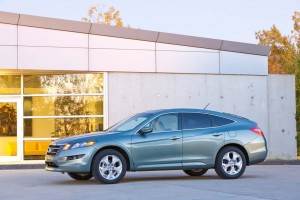Everyone seems to be focused on being greener these days, including automakers. However, those efforts may have a downside: rats!
Honda has been slapped with a class-action lawsuit because the soy-based coating it uses as wire covers on its vehicles is attracting rodents who are dining on the green covering and causing some vehicle owners thousands of dollars in repairs.
The automaker moved to the coating because it is biodegradable and less expensive than plastic; however, the green munchers are climbing under hoods and chewing through the soy covering and causing all kinds of problems.
One car owner said he took his 2014 Crosstour to the dealer because the wiring was “shredded through.” But the dealer said the repairs weren’t covered by warranty.
He says the dealer happened across “a live rabbit still chewing through the wiring in [the] vehicle, and provided [the plaintiff] with a photograph of the live animal chewing the wiring in the car,” and that he ended up paying about $765 to fix it.
(More U.S. auto buyers falling behind on payments. For more, Click Here.)
This wasn’t an isolated incident, the lawsuit says: another plaintiff paid a $500 deductible from a $1,400 bill after some critters gnawed through the steering wiring in his Accord. Again, the lawsuit claims, Honda refused to repair the damage under warranty.
The lawsuit came about after the lead plaintiff in the suit twice paid to have wires replaced on his 2012 Honda Accord. He noted for the second repair, mechanics wrapped the wires in special tape to deter the rodents. That, according to the suit, shows that Honda was aware of the issue and shouldn’t have to pay for the repairs.
“(The automaker) has turned this defective soy-based insulated wiring into another source of income for Honda and its dealers by charging aggrieved vehicle owners for repairs or parts to deal with the adverse consequences … that Honda should have covered under warranty in the first place,” according to the filing.
(Honda tops Best Cars for the Money List. Click Here to see who else made the list.)
While the animal appeal of the covering may have been a surprise to owners of the vehicle in the lawsuit, it’s been pretty well documented. In fact, the Los Angeles Times wrote a story about it in 2013: rabbits chewed their way through several cars at the Denver International Airport.
“They come to the recently driven cars for warmth, and once they’re there, they find that many of the materials used for coating ignition cables are soy-based. And the rabbits find that quite tasty,” Wiley Faris of Arapahoe Autotek repair center told the newspaper.
He recommended what might be considered a common-sense solution to the problem, or for anyone looking to ensure rodents don’t climb up under the hood of your vehicle for any reason.
(Auto insurers tag renters with higher premiums. For more, Click Here.)
“Predator urine is a good deterrent,” Faris said. “That stuff can take care of the critter damage pretty quick.”


Mercedes in the 1990’s with their W124 chassis went through the same issue with soy wiring. Gee, 20 years later we see the same problem!
I had an anti-lock brake harness chewed through by a packrat, on my 2011 Toyota Tundra, near the frame next to the engine block. Affected also the 4WD engagement. Dealer repaired at my expense, and stated they see many cases of rodent damage to wiring every year. I am wondering if the behavior is just a rodent thing, or aggravated by ingredients in the wiring.
Simple solution: Include rat poisoning or non-digestive material to the wire covering. Eliminate rodents and never have to worry about them eating through automotive wiring harnesses.